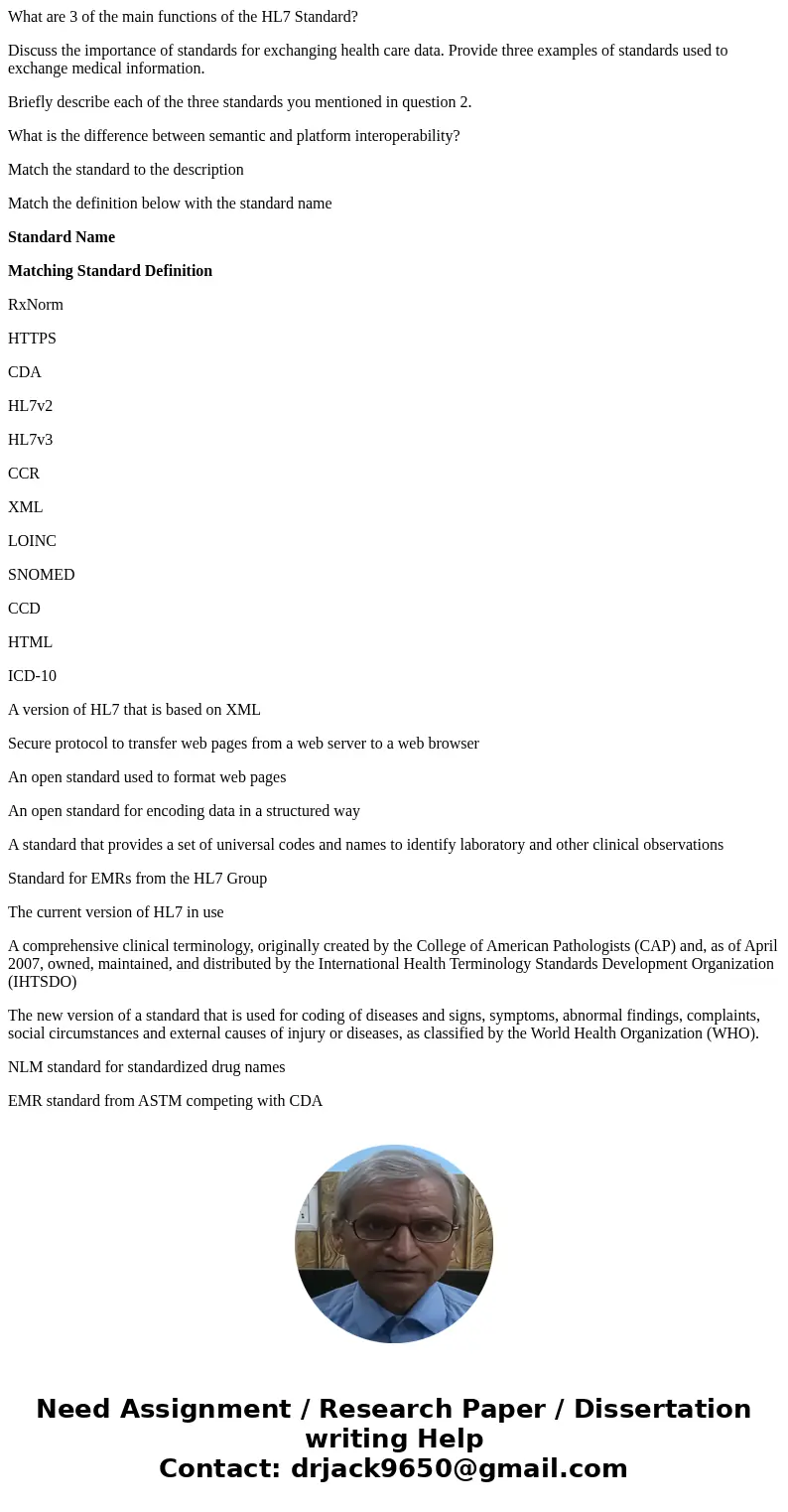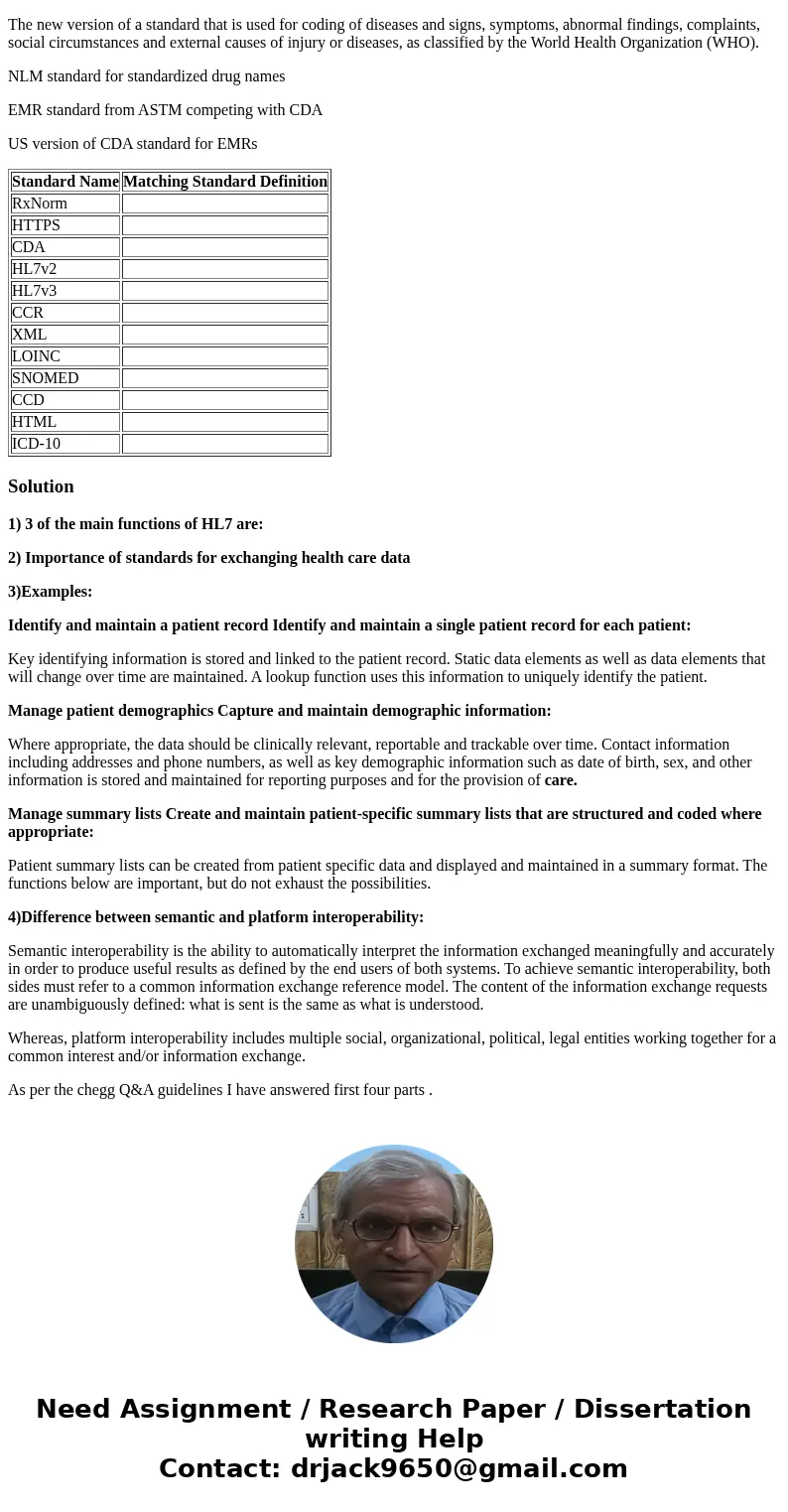What are 3 of the main functions of the HL7 Standard Discuss
What are 3 of the main functions of the HL7 Standard?
Discuss the importance of standards for exchanging health care data. Provide three examples of standards used to exchange medical information.
Briefly describe each of the three standards you mentioned in question 2.
What is the difference between semantic and platform interoperability?
Match the standard to the description
Match the definition below with the standard name
Standard Name
Matching Standard Definition
RxNorm
HTTPS
CDA
HL7v2
HL7v3
CCR
XML
LOINC
SNOMED
CCD
HTML
ICD-10
A version of HL7 that is based on XML
Secure protocol to transfer web pages from a web server to a web browser
An open standard used to format web pages
An open standard for encoding data in a structured way
A standard that provides a set of universal codes and names to identify laboratory and other clinical observations
Standard for EMRs from the HL7 Group
The current version of HL7 in use
A comprehensive clinical terminology, originally created by the College of American Pathologists (CAP) and, as of April 2007, owned, maintained, and distributed by the International Health Terminology Standards Development Organization (IHTSDO)
The new version of a standard that is used for coding of diseases and signs, symptoms, abnormal findings, complaints, social circumstances and external causes of injury or diseases, as classified by the World Health Organization (WHO).
NLM standard for standardized drug names
EMR standard from ASTM competing with CDA
US version of CDA standard for EMRs
| Standard Name | Matching Standard Definition |
| RxNorm | |
| HTTPS | |
| CDA | |
| HL7v2 | |
| HL7v3 | |
| CCR | |
| XML | |
| LOINC | |
| SNOMED | |
| CCD | |
| HTML | |
| ICD-10 |
Solution
1) 3 of the main functions of HL7 are:
2) Importance of standards for exchanging health care data
3)Examples:
Identify and maintain a patient record Identify and maintain a single patient record for each patient:
Key identifying information is stored and linked to the patient record. Static data elements as well as data elements that will change over time are maintained. A lookup function uses this information to uniquely identify the patient.
Manage patient demographics Capture and maintain demographic information:
Where appropriate, the data should be clinically relevant, reportable and trackable over time. Contact information including addresses and phone numbers, as well as key demographic information such as date of birth, sex, and other information is stored and maintained for reporting purposes and for the provision of care.
Manage summary lists Create and maintain patient-specific summary lists that are structured and coded where appropriate:
Patient summary lists can be created from patient specific data and displayed and maintained in a summary format. The functions below are important, but do not exhaust the possibilities.
4)Difference between semantic and platform interoperability:
Semantic interoperability is the ability to automatically interpret the information exchanged meaningfully and accurately in order to produce useful results as defined by the end users of both systems. To achieve semantic interoperability, both sides must refer to a common information exchange reference model. The content of the information exchange requests are unambiguously defined: what is sent is the same as what is understood.
Whereas, platform interoperability includes multiple social, organizational, political, legal entities working together for a common interest and/or information exchange.
As per the chegg Q&A guidelines I have answered first four parts .


 Homework Sourse
Homework Sourse